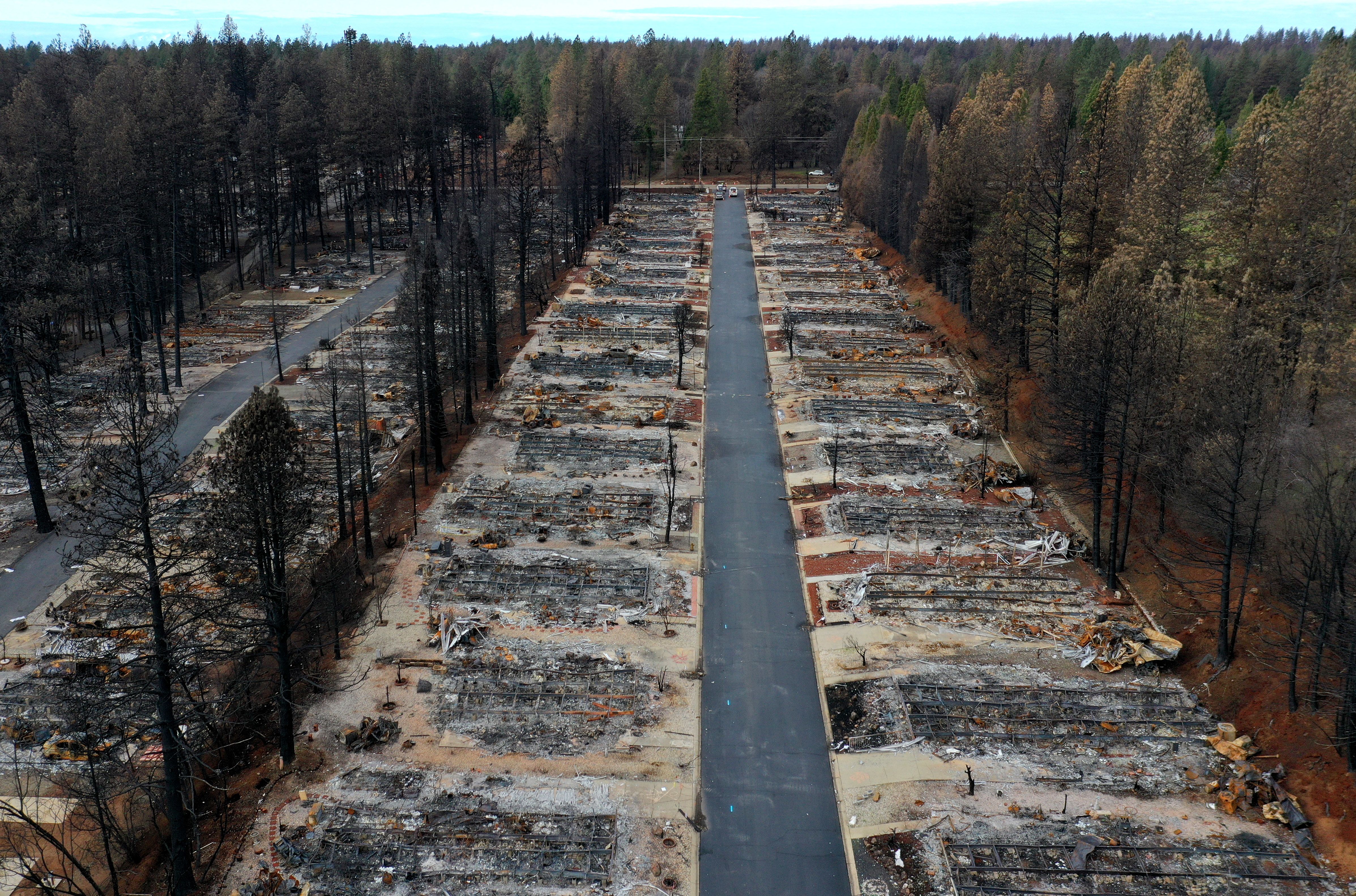Camp Fire, deadliest in California history, caused by PG&E electrical transmission lines

[ad_1]
Burned cars and downed power lines are seen along Pearson Road in Paradise, Calif., on Saturday, Nov. 10, 2018. The Camp Fire is so far the most destructive wildfire in California history.
DJane Tyska | The Mercury News | Digital First Media | Getty Images
LOS ANGELES — Cal Fire said Wednesday the catastrophic Camp Fire in November 2018 was caused by electrical transmission lines owned by Pacific Gas & Electric.
In a statement, the state agency said it conducted “a very meticulous and thorough investigation” of the Camp Fire — the deadliest and most destructive fire in California history. The Camp Fire destroyed most of the town of Paradise, California, resulting in 85 civilian fatalities and the destruction of more than 18,800 structures.
In February, PG&E said in a regulatory filing that it believed it’s “probable” that the company’s equipment will be found to be the source of the Camp Fire. Before that, the company also acknowledged it had problems with its transmission equipment near the site of the blaze.
“Cal Fire announced today that it has determined that PG&E electrical transmission lines near Pulga were a cause of the Camp Fire,” said PG&E in a statement Wednesday. “PG&E accepts this determination.”
That said, the San Francisco-based company added it has “not been able to form a conclusion as to whether a second fire ignited as a result of vegetation contact with PG&E electrical distribution lines, as Cal Fire also determined.”
PG&E, the state’s largest electric utility, filed for bankruptcy protection in late January after being hit with a flood of lawsuits from devastating wildfires in Northern California in 2017 and 2018, including the Camp Fire in Butte County.
Lawsuits from Camp Fire survivors could take years to resolve, and PG&E could potentially face criminal charges in connection with the 2018 blaze, including murder or involuntary manslaughter. Cal Fire said its investigative report was forwarded to Butte County District Attorney Mike Ramsey.
“The act by Cal Fire of forwarding its report is strictly symbolic,” Ramsey’s office said in a statement Wednesday. “The fact the Camp Fire was started by a malfunction of equipment on a Pacific Gas & Electric Company transmission line has been known for months by investigators and had been, essentially, admitted by Pacific Gas & Electric in an early December 2018 report to the California Public Utility Commission.”
Added the District Attorney’s office, “The investigation into how and why the PG&E transmission line equipment failed is ongoing in an effort to determine if PG&E or any of its personnel have any criminal liability. There will be no further comments on the status of the investigation, which is expected to last from weeks to months.”
The 2018 blaze destroyed about 90% of the town of Paradise, which once had a population of nearly 27,000 residents. Survivors of the disaster have since been relocated to nearby communities, including Chico, Redding and Oroville.
An aerial view of homes destroyed by the Camp Fire on February 11, 2019 in Paradise, California.
Justin Sullivan | Getty Images News | Getty Images
According to Cal Fire, the combination of warm conditions and the presence of windy weather contributed to the quick spread of the Camp Fire, which investigators traced to electrical equipment owned and operated by PG&E.
“The tinder-dry vegetation and Red Flag conditions consisting of strong winds, low humidity and warm temperatures promoted this fire and caused extreme rates of spread, rapidly burning into Pulga to the east and west into Concow, Paradise, Magalia and the outskirts of east Chico,” Cal Fire said.
Cal Fire said the second ignition site for the blaze was near the intersection of Concow and Rim roads.
“The cause of the second fire was determined to be vegetation into electrical distribution lines owned and operated by PG&E,” the agency said. “This fire was consumed by the original fire which started earlier near Pulga.”
There are state regulations requiring strict vegetation management practices by utilities such as PG&E, and they include standards for keeping vegetation clear of electrical transmission lines.
In California, utilities also face liability under what’s known as inverse condemnation as well as for negligence claims for wildfire and other damaging incidents caused by such things as power lines or other utility equipment. PG&E could face liabilities exceeding $30 billion in connection with fires in 2017 and 2018.
Last month, California Gov. Gavin Newsom released a wildfire report that slammed PG&E for its role in major blazes and suggested the state could push to break up the utility. Newsom’s office declined to comment Wednesday on Cal Fire’s announcement.
Cal Fire previously found PG&E at fault for 17 wine country fires in 2017, including the Redwood Fire, which resulted in nine fatalities. The state agency also found PG&E responsible for the Cascade Fire that killed four in Yuba County in October 2017.
Shares of PG&E fell 1.6% in trading on Wednesday. The stock was down fractionally in after-hours trading.
Source link






